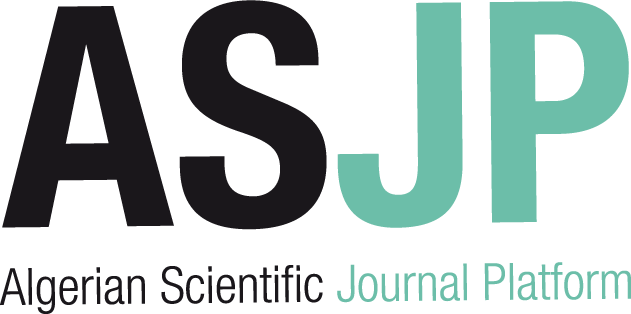| Titre : |
Machine learning on geographical data using Python : introduction into geodata with applications and use cases |
| Type de document : |
texte imprimé |
| Auteurs : |
Joos Korstanje, Auteur |
| Editeur : |
New York : Apress |
| Année de publication : |
2023 |
| Importance : |
XV, 312 p. |
| Présentation : |
ill. |
| Format : |
25 cm |
| ISBN/ISSN/EAN : |
978-1-4842-8286-1 |
| Note générale : |
Index |
| Langues : |
Anglais (eng) |
| Mots-clés : |
Geodatabases
Machine learning
Python (Computer program language) |
| Index. décimale : |
004.89 Systèmes d'application d'intelligence artificielle. Systèmes basés sur la connaissance intelligente. |
| Résumé : |
Get up and running with the basics of geographic information systems (GIS), geospatial analysis, and machine learning on spatial data in Python.
This book starts with an introduction to geodata and covers topics such as GIS and common tools, standard formats of geographical data, and an overview of Python tools for geodata. Specifics and difficulties one may encounter when using geographical data are discussed: from coordinate systems and map projections to different geodata formats and types such as points, lines, polygons, and rasters. Analytics operations typically applied to geodata are explained such as clipping, intersecting, buffering, merging, dissolving, and erasing, with implementations in Python. Use cases and examples are included. The book also focuses on applying more advanced machine learning approaches to geographical data and presents interpolation, classification, regression, and clustering via examples and use cases.
This book is your go-to resource for machine learning on geodata. It presents the basics of working with spatial data and advanced applications. Examples are presented using code (accessible at github.com/Apress/machine-learning-geographic-data-python) and facilitate learning by application. |
| Note de contenu : |
Summary :
Part I: General introduction
Chapter 1: Introduction to Geodata
Chapter 2: Coordinate Systems and Projections
Chapter 3: Geodata Data Types
Chapter 4: Creating Maps
Part II: GIS operations
Chapter 5: Clipping and Intersecting
Chapter 6: Buffering
Chapter 7: Merge and Dissolve
Chapter 8: Erase
Part III: Machine Learning and mathematics
Chapter 9: Interpolation
Chapter 10: Classification
Chapter 11: Regression
Chapter 12: Clustering
Chapter 13: Conclusion |
Machine learning on geographical data using Python : introduction into geodata with applications and use cases [texte imprimé] / Joos Korstanje, Auteur . - New York : Apress, 2023 . - XV, 312 p. : ill. ; 25 cm. ISBN : 978-1-4842-8286-1 Index Langues : Anglais ( eng)
| Mots-clés : |
Geodatabases
Machine learning
Python (Computer program language) |
| Index. décimale : |
004.89 Systèmes d'application d'intelligence artificielle. Systèmes basés sur la connaissance intelligente. |
| Résumé : |
Get up and running with the basics of geographic information systems (GIS), geospatial analysis, and machine learning on spatial data in Python.
This book starts with an introduction to geodata and covers topics such as GIS and common tools, standard formats of geographical data, and an overview of Python tools for geodata. Specifics and difficulties one may encounter when using geographical data are discussed: from coordinate systems and map projections to different geodata formats and types such as points, lines, polygons, and rasters. Analytics operations typically applied to geodata are explained such as clipping, intersecting, buffering, merging, dissolving, and erasing, with implementations in Python. Use cases and examples are included. The book also focuses on applying more advanced machine learning approaches to geographical data and presents interpolation, classification, regression, and clustering via examples and use cases.
This book is your go-to resource for machine learning on geodata. It presents the basics of working with spatial data and advanced applications. Examples are presented using code (accessible at github.com/Apress/machine-learning-geographic-data-python) and facilitate learning by application. |
| Note de contenu : |
Summary :
Part I: General introduction
Chapter 1: Introduction to Geodata
Chapter 2: Coordinate Systems and Projections
Chapter 3: Geodata Data Types
Chapter 4: Creating Maps
Part II: GIS operations
Chapter 5: Clipping and Intersecting
Chapter 6: Buffering
Chapter 7: Merge and Dissolve
Chapter 8: Erase
Part III: Machine Learning and mathematics
Chapter 9: Interpolation
Chapter 10: Classification
Chapter 11: Regression
Chapter 12: Clustering
Chapter 13: Conclusion |
|  |


 Ajouter le résultat dans votre panier Faire une suggestion Affiner la recherche
Ajouter le résultat dans votre panier Faire une suggestion Affiner la recherche










